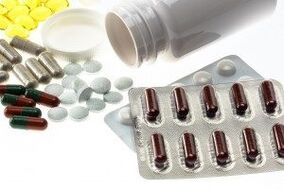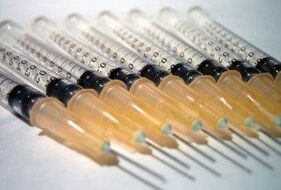
Varicose veins of the lower extremities is a chronic disease manifested by disruption of the mechanism of blood flow in the veins. Because of this, the venous walls are under constant pressure, gradually thinning, nodular enlargement is formed on the veins.
Varicose veins develop as a result of blood stagnation in the veins of the lower extremities. It is manifested by swelling of the peripheral veins of the legs and their bulging under the skin. The veins look sinusoidal and take on a bluish tinge. Severe pain in the legs is noted.
Varicose vein disease progresses without treatment, complicated by thrombophlebitis and trophic ulcers. Treatment of varicose veins should be started at the first sign of symptoms to prevent the development of the disease.
First of all, for the treatment of varicose veins of the legs, doctors use conservative methods. If this does not work, they resort to surgical treatment.
Physiotherapeutic treatment
How to varicose veins on the legs, an important place is given to physiotherapy methods. The key is the following:

- Electrophoresis;
- Lymphatic drainage;
- Hyperbaric oxygen;
- Galvanization;
- Magnetotherapy;
- Darsonvalization;
- Exposure to ultraviolet rays;
- UHF et al.
The most popular procedure is darsonvalization. It is carried out with a special device that generates a weak electrical discharge. From bottom to top along the legs for 15 minutes for each limb. The course of treatment for varicose veins is about 20 sessions (depending on the degree of disease development). As a result, vascular tone returns to normal, lymph drainage and microcirculation in the legs improve.
Pulse magnetotherapy is performed using a magnetic field generator that induces electrical currents in the tissues of the lower extremities that have a therapeutic effect. As a result of this effect, the muscle fibers of the vascular walls in the legs are stimulated and toned. It improves blood circulation in the extremities, reduces swelling and reduces pain. Depending on the degree of development of varicose veins, the session lasts from 10 to 20 minutes.
Pneumatic compression also helps to restore the tone of veins and blood vessels through facial massage. A boot-like device is placed on the patient's foot. It is pressurized by the gas supply. However, the method should be discontinued for patients with varicose veins who have a tendency to thrombosis.
Balneotherapy is an effective method of treating varicose veins of the leg, which includes taking baths with mineral water. The baths themselves are prescribed locally or in general. Hydrotherapy is a contrasting local bath. These methods are especially effective in the early stages of the disease. Manifestations of varicose veins are quite effective in treating these methods at this stage.
Oxygen
In addition to local physiotherapy procedures, others are performed that affect the entire body. For example, oxygen bath in blisters improves blood circulation, relieves the symptoms of varicose veins of the leg. Hyperbaric oxygen is beneficial. During the session, the patient breathes pure oxygen at a pressure of more than one and a half atmospheres.
Ozone therapy is related to this method. Inhalation of ozone activates many processes in the patient's body: microcirculation is improved, metabolism is normalized and regeneration is accelerated. Ozone in therapeutic doses also prevents blood clots from forming, slightly weakening the blood. The course of treatment of varicose veins with ozone is 5 - 10 procedures, including at intervals of 2 days.
Physiotherapy is especially effective in the early and middle stages of the disease. Physiotherapy procedures should be prescribed by a phlebologist.
Drug treatment

Medications on how to defeat varicose veins on the legs are secondary. They are the key to successful treatment and the high efficiency of the main method. Medications are prescribed during physiotherapy and other methods of conservative treatment and after surgery.
There are many remedies for treating varicose veins. They can be used alone or in combination. A phlebologist should prescribe a suitable one. All drugs can be divided into several groups:
- Phlebotonics;
- Anticoagulants;
- Deconestants;
- Distance;
- Antioxidants
- Fibrinolytics.
Phlebotonics allow you to increase the tone of the walls of blood vessels and veins and are therefore effective in treating varicose veins in the leg. The walls become stronger and denser. The effect of treatment with other methods is fixed. Blood circulation in the legs is improved, lymphatic drainage is improved. They are prescribed to prepare for surgery and as post-rehabilitation to alleviate inflammation in varicose veins.
Anticoagulants are medications that reduce the ability of the blood to clot. This prevents the formation of blood clots, which is of great importance for the varicose veins of the leg. They can be taken as pills or as an injection. It is dangerous to take them without consulting a doctor, because they have a side effect - bleeding, which is difficult to stop.
Decongestants can be taken orally in the form of tablets or externally in the form of gels and ointments. In the form of tablets, mainly used diuretics. Such drugs significantly reduce leg pain with varicose veins, as well as additional pressure on the walls of the veins. Their use improves blood circulation.
Disaggregants - Drugs that also affect blood clotting, although do not belong to anticoagulants. They stop the clotting process only at an early stage and therefore do not belong to the anticoagulants. They have no significant effect on general coagulation rates. When used as adjunctive therapy for varicose veins, they have the same effect as anticoagulants.
Antioxidants act by detoxification. Restoration of chemical bonds in cells enhances the tone of the walls of blood vessels and veins. As a result, the varicose veins of the leg heal much faster.
Fibrinolytics prevent blood clotting. It is caused by the destruction of fibrin, which is part of the blood clot. The use of drugs of this group allows blood plasminogen (inactive protein) to take the form of plasmin, which leads to the destruction of blood clotting. However, taking this drug does not prevent further thrombosis of varicose veins.
The pharmaceutical company has developed a whole series of drugs that combine the properties of several described groups. Such medications should be prescribed by a physician and taken strictly under his supervision. This is due to the fact that they have quite a few side effects.
The use of treatments for varicose veins in the legs may not be the only measure. They are prescribed in combination with other medications.
Laser therapy

This is an effective way to treat varicose veins in the legs. The working principle of the laser in this disease lies in its effect on hemoglobin. Hemoglobin absorbs laser light and heat is generated in the blood. As a result, the damaged vessel is "sealed". The laser also indirectly affects the tone of the walls of blood vessels and veins as it causes spasm of these walls. The advantage of such an impact is its accuracy. It affects only certain tissues, without affecting the surrounding area at all.
Blood flow to the treated area will stop after the laser is applied. The blood supply to this part of the limb is generated by the deep veins. In the "non-working" part of the ship, connective tissue is formed, which will disintegrate over time.
The advantage of this method of getting rid of varicose veins is its minimal trauma. Patients do not experience discomfort or pain after the intervention. In addition, there are other benefits:
- The method does not require a skin incision, unlike surgery. Thus, no scars remain after that. There are also no bruises after the procedure;
- The procedure is short and is performed under local anesthesia. With this in mind, it is as safe as possible for health, as opposed to surgery performed under general anesthesia;
- Financially, laser treatment of varicose veins is similar to surgery. While this may seem more expensive, we should keep in mind that after this the patient does not need to go through a period of rehabilitation and stay on sick leave for a long time, or spend money on recovery.
Many diseases can be cured with laser. It has become a good alternative to many types of procedures. Minimal trauma, painlessness and effectiveness - all of these are preferred by laser treatment in many situations.
Sclerotherapy

Sclerotherapy is a popular method of treating varicose veins in the legs, sometimes also called physiotherapy. Essentially, special drugs are injected into a vein. The method is non-traumatic and effective and is therefore popular. This method is sometimes compared in its effectiveness to laser and even surgical interventions. After such a procedure, the walls of the vessel become sticky and strong, making it possible to defeat the varicose veins of the legs. And the drug is absorbed into the body.
The main advantage of the method of getting rid of the disease is the absence of scars and bruises after the procedure. It is also important that it is not too painful and can be performed under local anesthesia. After the procedure, the integrity of the circulatory system is not compromised because the veins are not removed. Such an intervention may be an ideal option both when it is dangerous to use surgical methods - thrombophlebitis, periphlebitis, as well as in the treatment of relapses of the disease, when the veins are fragile and twisted.
The method has many contraindications. First of all, it is pregnancy and lactation. Serious diseases of the cardiovascular system, diabetes, chronic diseases of the liver and kidneys, allergies - all this will also become a contraindication to the use of sclerotherapy, it is better to think about how to cure varicose veins of the leg otherwise.
If your doctor prescribes sclerotherapy, then he or she should be informed of possible contraindications. When a patient has chronic diseases of any nature, then the possibility of using sclerotherapy remains in question.
Surgery

Surgery is a traumatic and painful way to effectively treat severe varicose veins in the legs. However, only its efficiency reaches 100%. Also, sometimes it takes a lot less time than any other. Disadvantages can be named large scars and scars, long rehabilitation period. There are several types of surgical intervention:
- Stripping involves removing a section of vein with a thin probe. The injection is given at the beginning of the vein and removed at the end. In this case, the area fixed on the probe is turned inwards and it seems to be easier to remove it;
- Phlebectomy is a traditional surgical method of treating varicose veins that involves cutting tissue with a scalpel. It is performed both when minimally invasive intervention is not possible, for example when important areas are affected or there is acute inflammation, as well as for other indications;
- Microflebectomy is considered a minimally invasive procedure. Promotes effective treatment of varicose veins. By type of execution, it is similar to the previous method, only the incisions on the skin are made very small. Thus, he is less traumatic. It can be performed when the injury is not so severe and it is not necessary to remove a large section of the vein.
This method has many indications and contraindications. So it will not interfere with pregnant women and those who have just given birth. After giving birth, you have to wait at least a month and a half. In the early stages of varicose veins, you should also not use this method.
Surgical intervention does not guarantee the absence of recurrence of varicose veins in the leg. You need to be careful about your health.
Many methods on how to cure varicose veins in the legs allow the doctor to choose the best one for each specific case. However, the more the disease starts, the more radical method must be chosen. Therefore, you should not delay contacting your doctor if you notice the first symptoms of varicose veins on your leg.




































